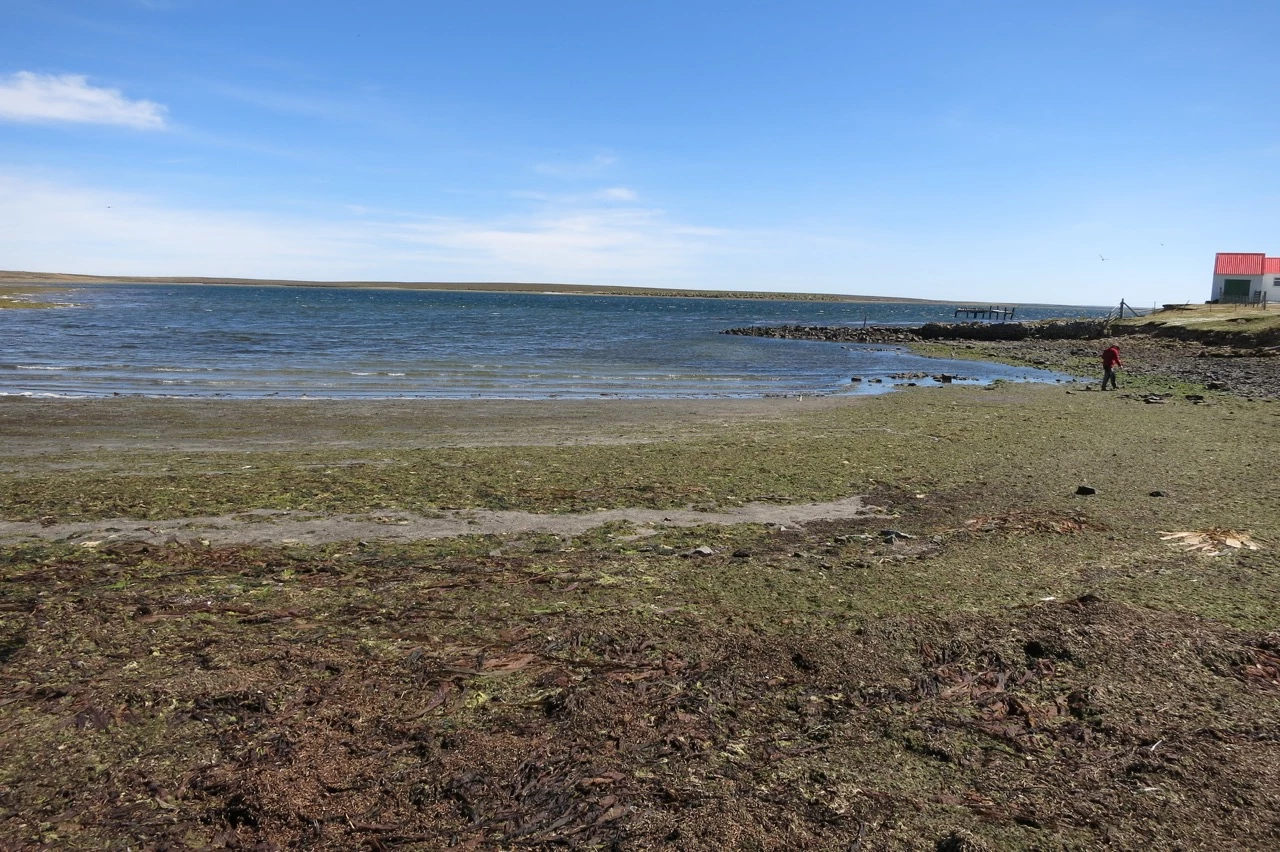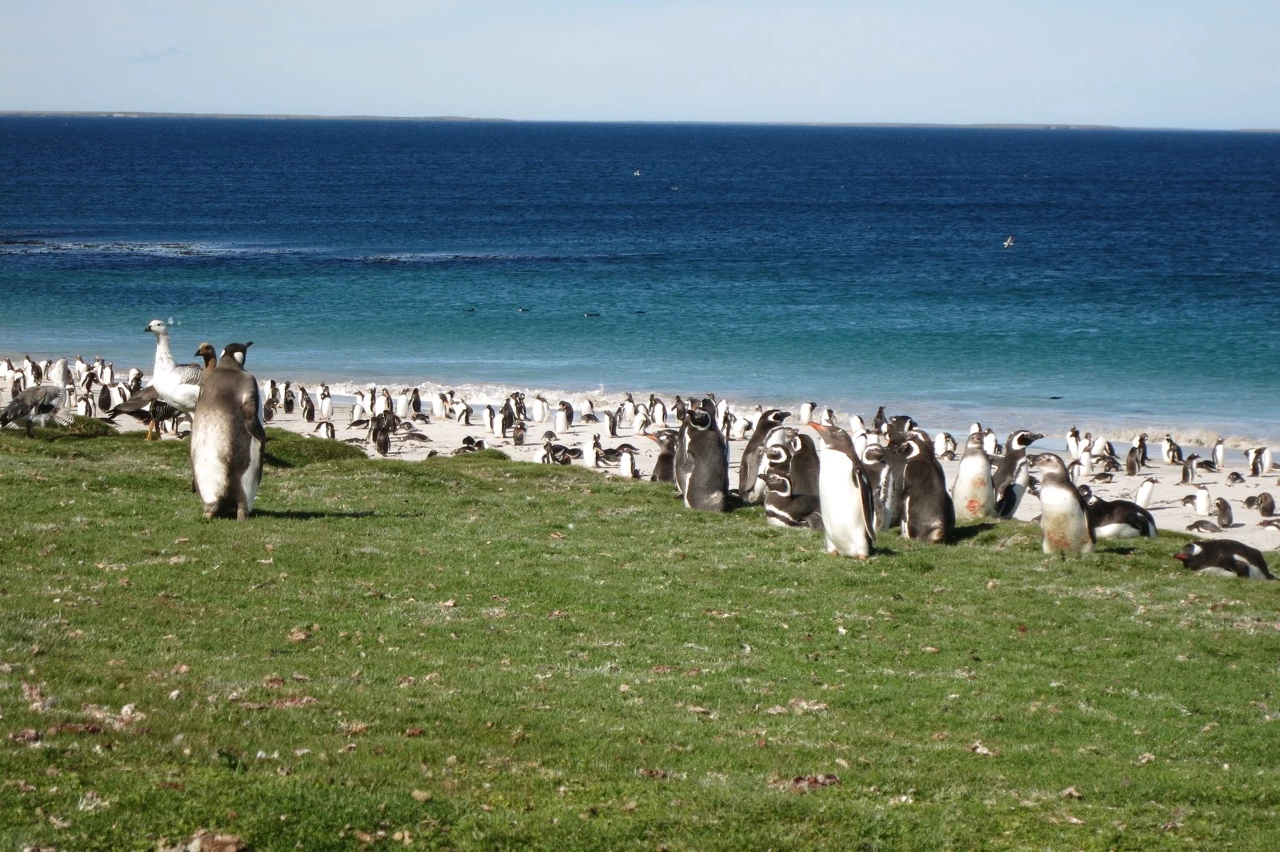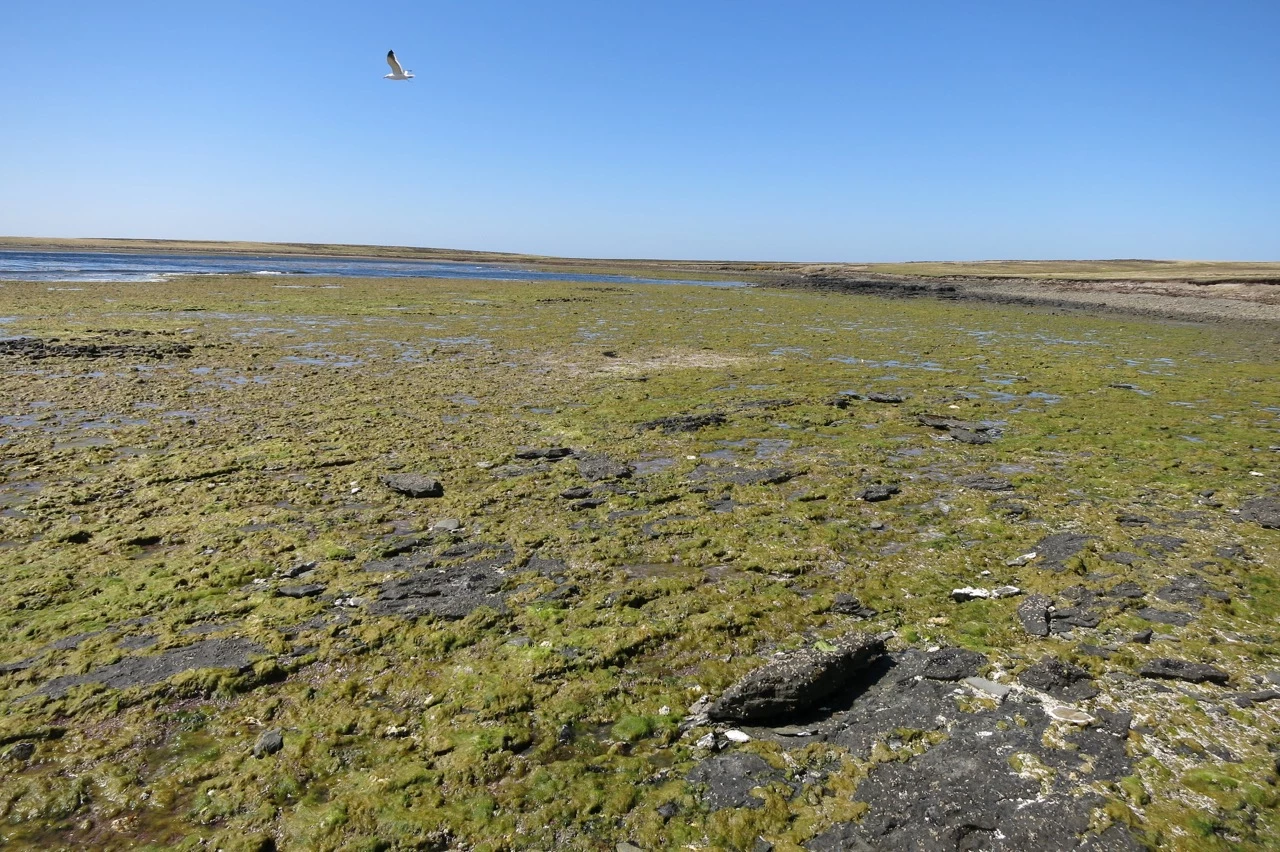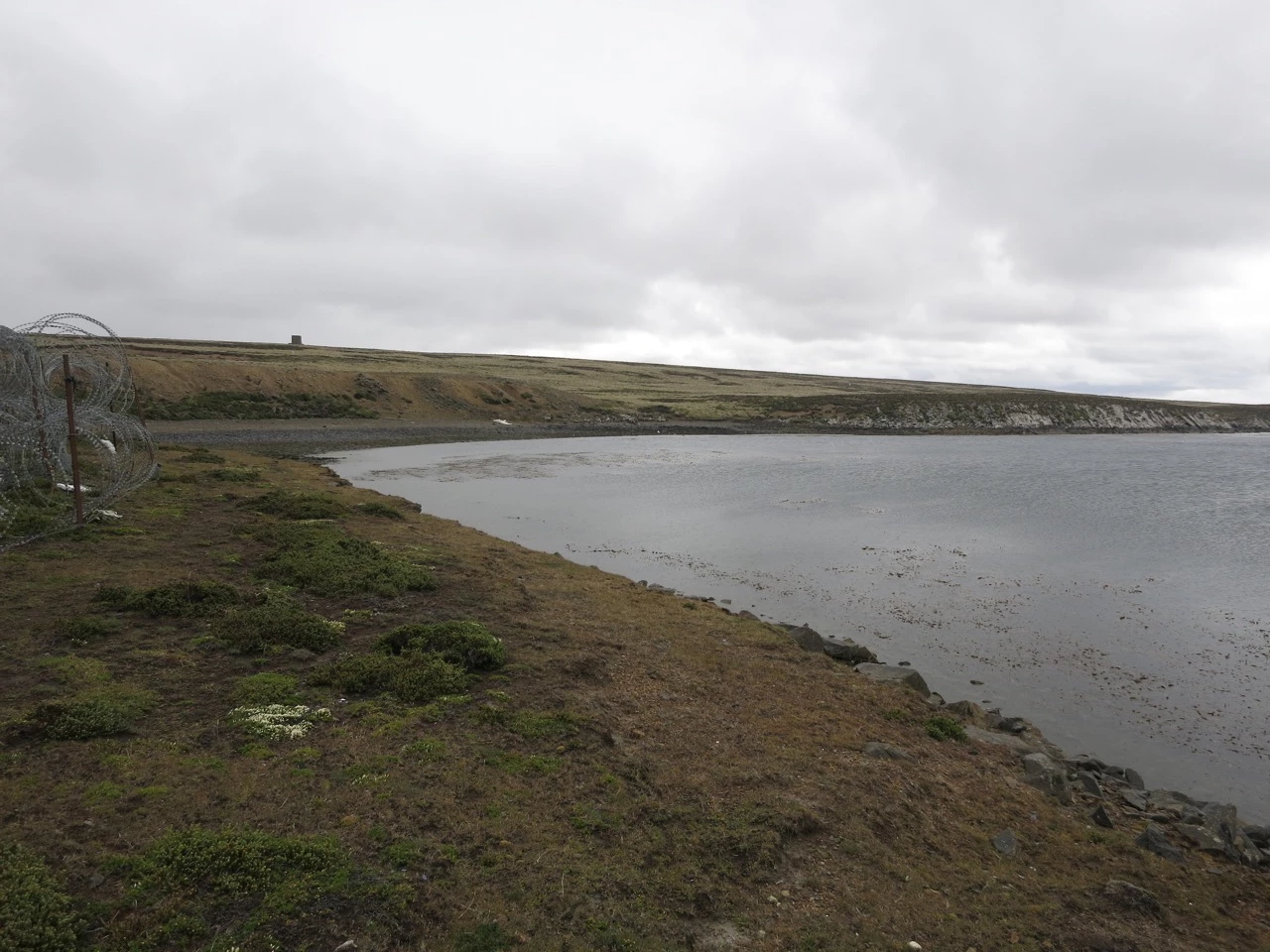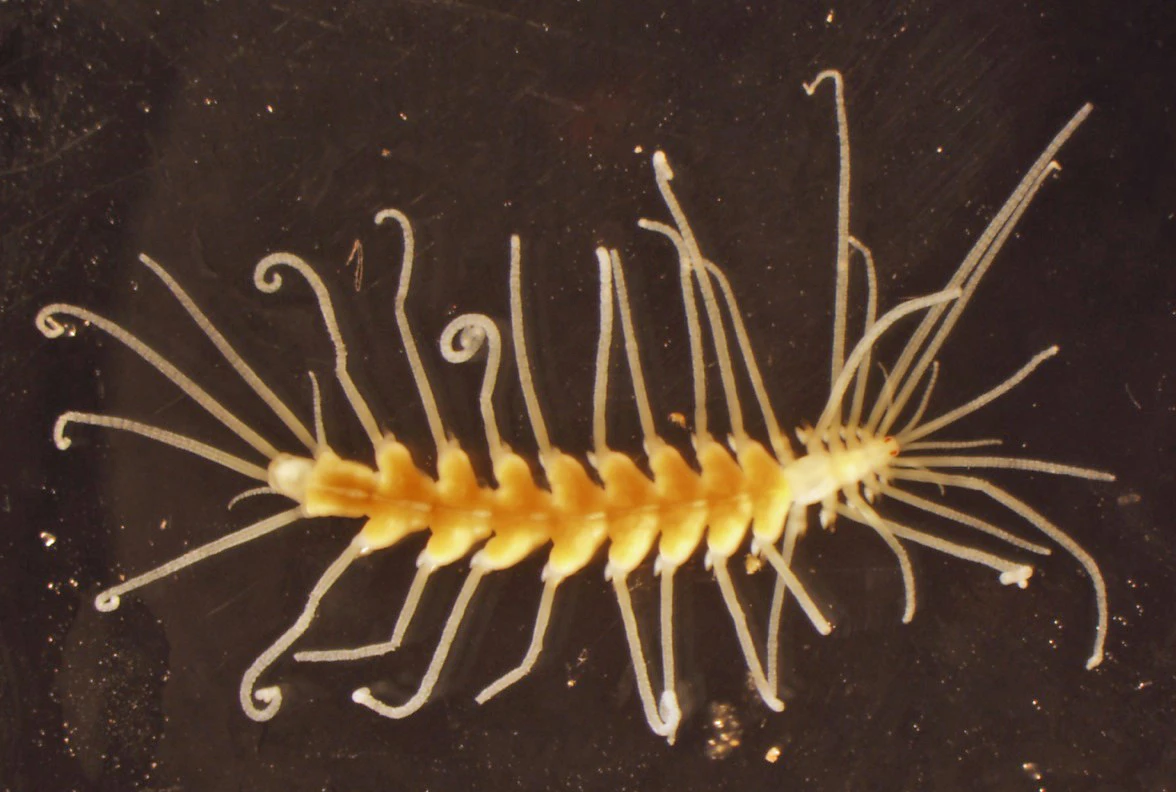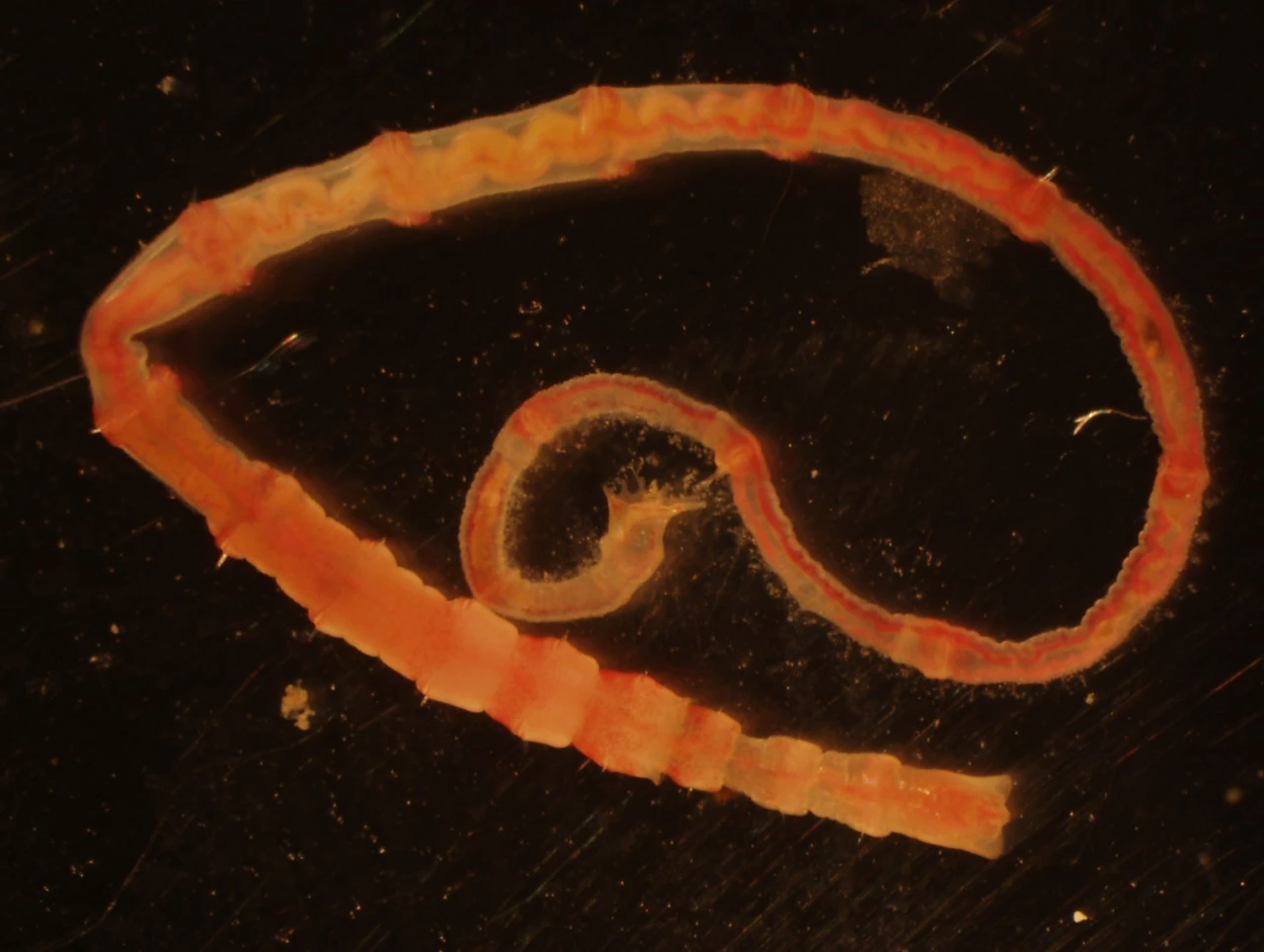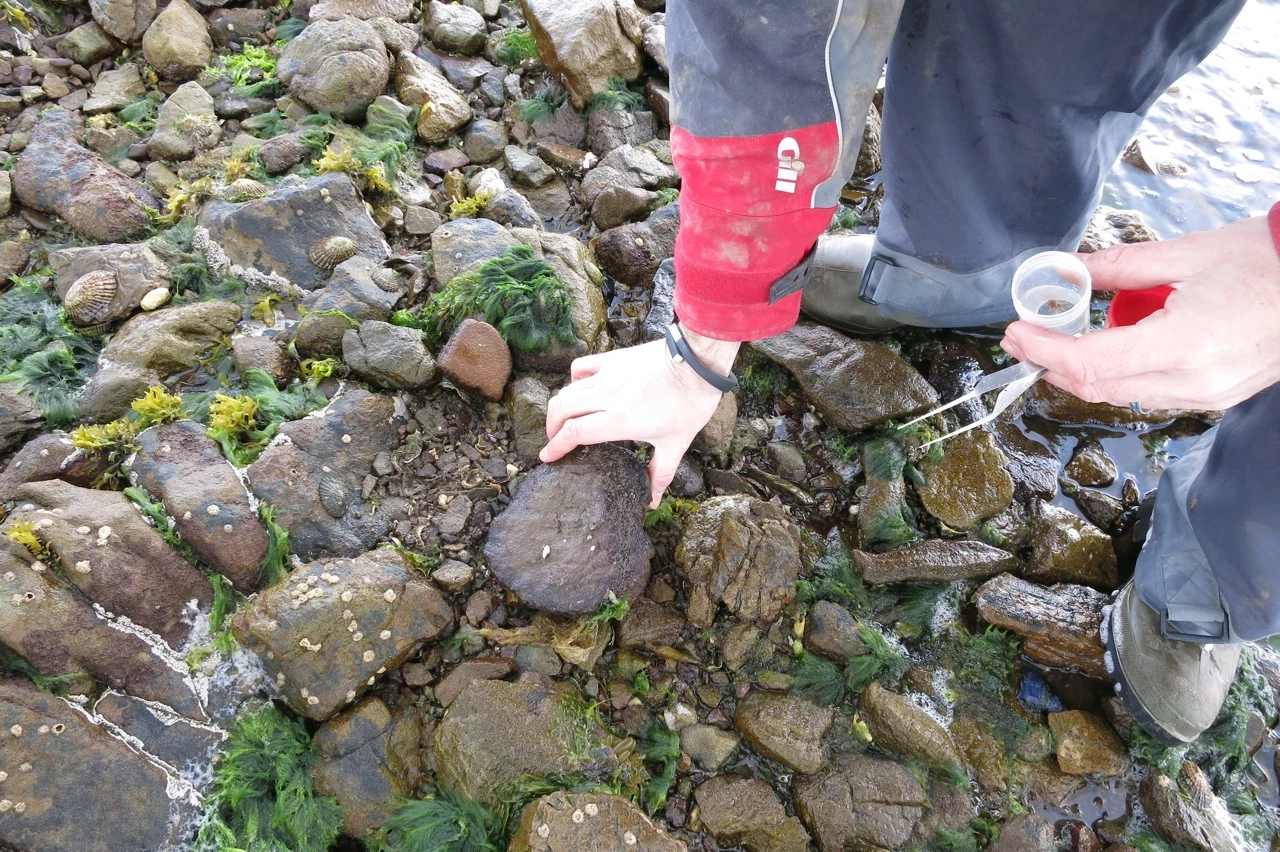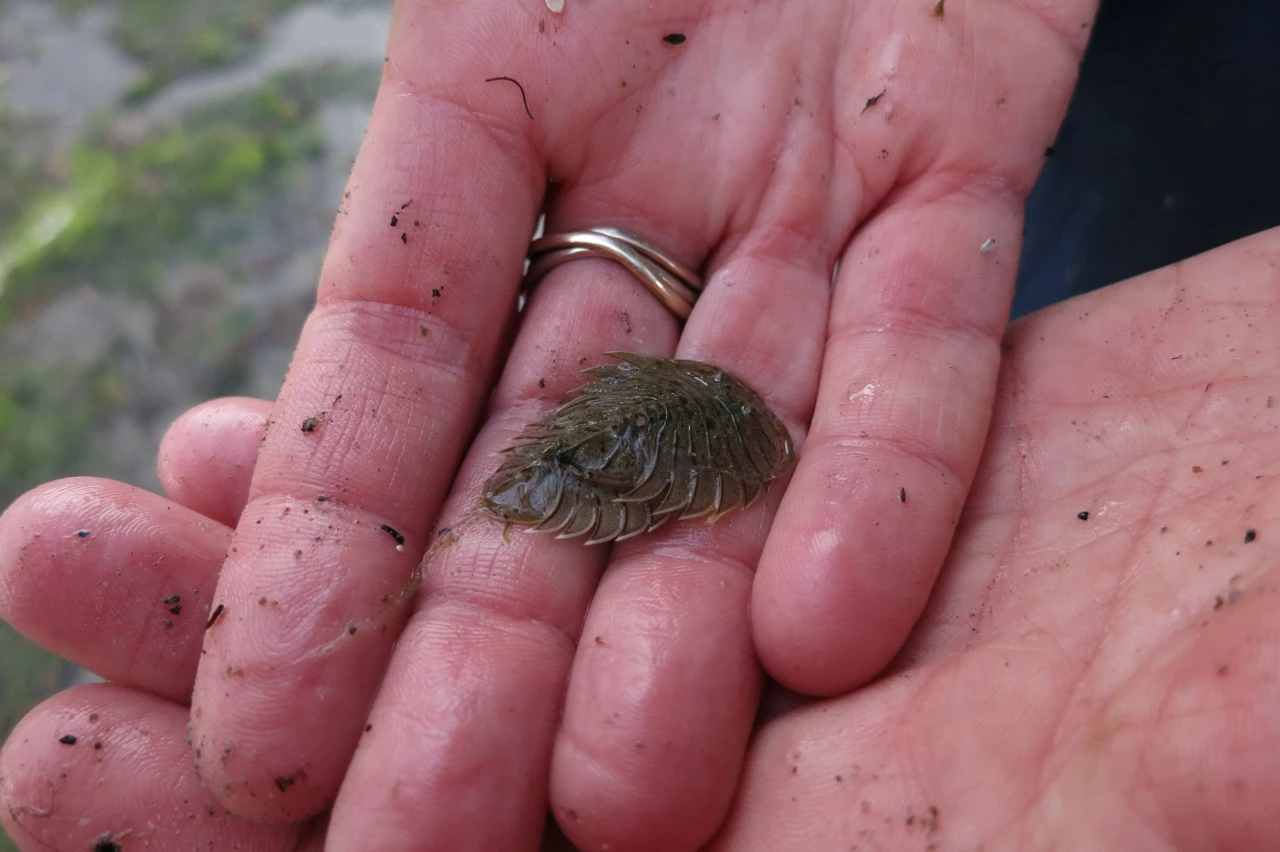Sea Lions, Penguins and Algae
, 23 January 2015
22.01.15
Bleaker Island has proven to be very interesting and we’ve certainly had the weather to appreciate it, summer has suddenly landed. It’s sunny enough for sun cream but not quite warm enough to tempt us into short sleeves, still that’s a definite improvement!
Bleaker Island is 10-12 miles in length. We’ve been able to use a car whilst here, so have been able to cover most of the island to check out the coastline. We didn’t arrive until mid-afternoon but were just in time yesterday to catch enough of the tide to still be able to do sampling in the mid-shore of the bay just below the settlement (photo 1). This was a soft muddy coarse sand, fairly black in appearance but with several tubes apparent that could contain worms as well as a few other free-living specimens to collect. There were also a few rocks to turn over and inspect. However, the tide was chasing us back up the beach so we did not stay long. Further round from here, the shore was covered in both large and small flat rocks under which we found a few more species to add to the collection.
Once the tide had risen too far to make further collecting worthwhile, we went on our first reccy along the shoreline to see what it looked like. There seemed to be very little in the way of sand except for a very large white sandy bay covered in penguins (photo 2). Sadly, I know from previous experience that worms and penguins don’t mix, with the type of sand favoured by penguins being practically empty of worms. This used up the rest of the usable day but the next day we headed south along the rest of the island. The southern coastline is all exposed cliffs, with large areas of flat rock ledges made up of solid, scoured-clean rock that did not look promising. The northern coastline, more sheltered, had large swathes of different rock ledges that were covered in a filamentous algae that in turn covered large deposits of a pink calcareous, loose alga (photo 3). This was a type of habitat I had not seen around the islands before and was quite excited to find (okay, that may sound strange but we all find different things exciting!). There did not actually seem to be much diversity within the loose crisp algae but at the same time it was a new habitat in a new location and that kind of data is always important to have whether it is rich or poor in animals. After sampling here we still had time to get back to the settlement just at the low tide point. We went back down to the small bay sampled yesterday and added a sample point from low tide to the mid-tide point already surveyed. There was a small distraction in the shape of a mother sea lion and her pup (photo 4), very small being only a couple of weeks old. Distraction over, the sampling was done. Just to finish off the afternoon we drove slightly further up the coast to add another site to the list that also had some of the calcareous algae over rock ledges (photo 5). These were high enough on shore allowing us to sample until 2-3 hours after the tide had turned.
Tomorrow is back to Stanley and we hope summer will come back with us.
